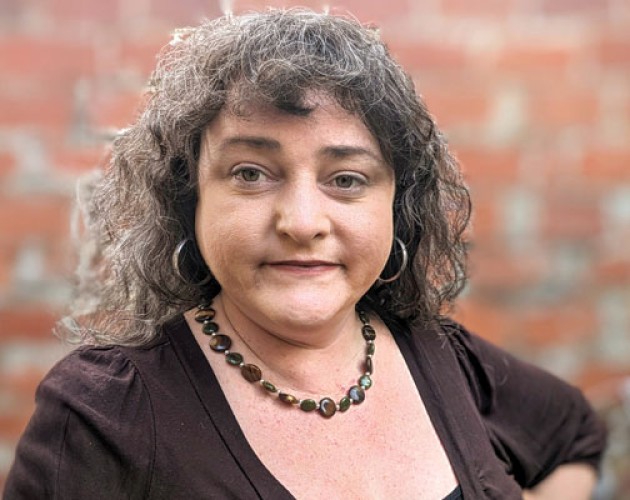Is Self-Publishing Still Writing’s Road Less Traveled?

You’ve taken a creative writing course and now you have a collection of stories or a memoir or a novel. You’ve decided that being a writer just might be your calling. So how do you go about getting your hard work before the readers’ eyes?

UC Berkeley Extension instructor Stephen Albert has been down this road. His work has been published by New York publisher Scribner’s, Ploughshares, The Wall Street Journal, Time, The Miami Review and CreateSpace; he has also self-published. We asked Albert how he’s decided between self-publishing and opting for a traditional publisher, and why you might choose one path over the other.
According to The Kindle Effect, “self-publishing is a global phenomenon—an independent route intentionally chosen by more and more authors” over the path of traditional publishing. If that is the case, what does a writer need to consider when it comes time to publish his or her work?
In order to get started in self-publishing, you should first take some time to read up on the process. A good place to start is online: look at which book publishers and self-publishing companies not only print, but also offer editorial services. If you contract with a book printer, you will then need to subcontract out editorial work such as content editing, line editing and proofreading. (You may very well need these services even if you plan to publish exclusively online.) You may also need an artist or photographer, and certainly will need a fulfillment or book delivery service if you print on paper. A much easier route is to work with one of the self-publishing companies available online; CreateSpace, Author House and Xlibris are three established self-publishing houses. While they are not as well known as major traditional publishers such as Scribner’s or Simon & Schuster, they can be just as capable of publishing and delivering the product as traditional publishers are—and they can both print your book and deliver it online.
Assuming you already have a completed manuscript and want to self-publish, you’ll need to identify a self-publishing company that fits your needs. Let's use CreateSpace as an example. On the company’s website, you will find a menu of options: print on paper, ebook, Kindle. You will also find a menu of services, including content editing, proofreading, design and layout, or direct-to-print—which means no editorial assistance. If you require absolutely no assistance, you can upload your book to the publisher and have it available on demand for less than $100 but it is likely you will need help. If you require content editing and marketing, your costs could be a few thousand dollars.
“When you self-publish, you are the boss—you are the writer and the publisher. Being the boss means you reap all of the reward but also take (or pay for) all of the risk.”
But publishing isn’t just about the words on the page. You also need to consider layout and design. How does that work when you self-publish?
Layout and design, as well as art and photography, can be purchased from a self-publishing company. But commonly, if you choose to become a self-published author, you have an idea what you would like your book to look like and you can choose the layout that matches that vision. You can literally do it all yourself or get all kinds of assistance from one of the self-publishing companies; a publisher representative can guide you through the process.
What other factors enter into the decision to self-publish or to be published by a traditional publisher?
If you choose to work with a traditional publisher—a publisher who has paid you an advance for your product and promises to pay a share of future profits to you—then in a real sense, you work for that publisher. Because you are a contract employee, you don’t have a direct say about how your book will look and how or for how long it will be available to readers. Working with a traditional publisher is, in some ways, not wholly a choice you make; you initiate that process by finding a literary agent to represent you, and then hopefully you choose between publishers who want to publish your writing. You then sign business contracts—with your agent and the publisher—to go forward.
So, it's important to consider what you want out of the publishing experience. I had two book contracts with Scribner's, an old and storied publisher. If you want to be published by a big-name publisher, then you must go into that relationship knowing that it is a business and you, the writer, are only part of the business. You will work with an array of professionals, but you are not the boss. However, when you self-publish, you are the boss—you are the writer and the publisher. Being the boss means you reap all of the reward but also take (or pay for) all of the risk. When you work with a traditional publishing house, the house takes most of both the risk and the reward.
Anyone can self-publish: You pay to play. You could self-publish today within a few hours. The question is, ‘Is self-publishing profitable?’ Certainly anyone can pay to have their work published. You can have a garage full of books in a week. But are you doing it for love or for money? If you are doing it for love, the choice is easy—pay as you go. If you are doing it for money, then you must have readers, an audience, someone who will pay for your product—and that requires a platform. It is marketing’s job to make sure people know who you are and want to read what you write. Traditional publishers have sophisticated marketing operations and it's in their own best interest that readers know about you. As a self-publisher, you have to find your readers.
How do you promote a self-published project?
There are hundreds of niches in publishing; there is an audience for almost any kind of writing. But finding that audience is key. Via my blog I sell my self-published books; one of them has been for sale for nearly 10 years. It helps that my blog reaches 10 million unique readers each year (which was its own publishing venture). In publishing, that book is known as an "evergreen"; It has what they call "a long tail”—something that people are interested in—and I am always finding new readers, mostly by “word of mouth” via the Internet. I have sold more books through self-publishing than I had when working with a traditional publisher, even though the traditional publisher put my book in every bookstore in the country and helped me land a review in The New York Times Book Review. I'm happy I worked with a traditional publisher, but I'm happier I self-published.
What other advice do you have for getting that first piece of written work published?
There is only one way to be published: finish the manuscript. There is only one way to finish the manuscript: put your butt in the chair and write. Many people want to write books, but few are published in the end. Why? It all comes down to what you want most to do in life. If you want to write, write! At a minimum, write 10 minutes a day, every day. (Of course, soon you will be writing for longer periods.) If you were to write one page a day for the next year, you would have written a 350-page book; most books published these days are 250 pages. You will have written an extra 100 pages, and your editor will be in love with you.

